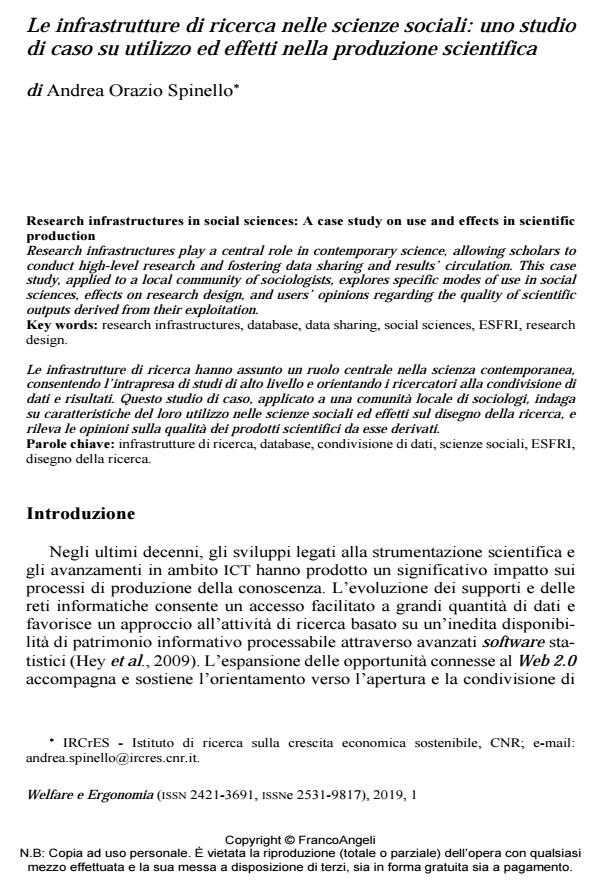Le infrastrutture di ricerca nelle scienze sociali: uno studio di caso su utilizzo ed effetti nella produzione scientifica
Titolo Rivista WELFARE E ERGONOMIA
Autori/Curatori Andrea Orazio Spinello
Anno di pubblicazione 2020 Fascicolo 2019/1
Lingua Italiano Numero pagine 12 P. 67-78 Dimensione file 183 KB
DOI 10.3280/WE2019-001007
Il DOI è il codice a barre della proprietà intellettuale: per saperne di più
clicca qui
Qui sotto puoi vedere in anteprima la prima pagina di questo articolo.
Se questo articolo ti interessa, lo puoi acquistare (e scaricare in formato pdf) seguendo le facili indicazioni per acquistare il download credit. Acquista Download Credits per scaricare questo Articolo in formato PDF

FrancoAngeli è membro della Publishers International Linking Association, Inc (PILA)associazione indipendente e non profit per facilitare (attraverso i servizi tecnologici implementati da CrossRef.org) l’accesso degli studiosi ai contenuti digitali nelle pubblicazioni professionali e scientifiche
Le infrastrutture di ricerca hanno assunto un ruolo centrale nella scienza contemporanea, consentendo l’intrapresa di studi di alto livello e orientando i ricercatori alla condivisione di dati e risultati. Questo studio di caso, applicato a una comunità locale di sociologi, indaga su caratteristiche del loro utilizzo nelle scienze sociali ed effetti sul disegno della ricerca, e rileva le opinioni sulla qualità dei prodotti scientifici da esse derivati.
Parole chiave:Infrastrutture di ricerca, database, condivisione di dati, scienze sociali, ESFRI, disegno della ricerca.
Andrea Orazio Spinello, Le infrastrutture di ricerca nelle scienze sociali: uno studio di caso su utilizzo ed effetti nella produzione scientifica in "WELFARE E ERGONOMIA" 1/2019, pp 67-78, DOI: 10.3280/WE2019-001007